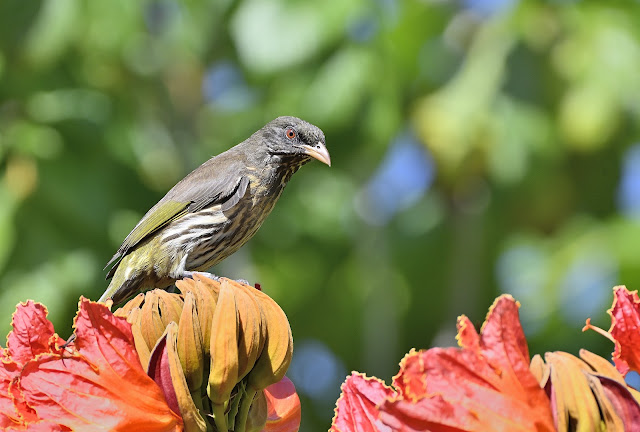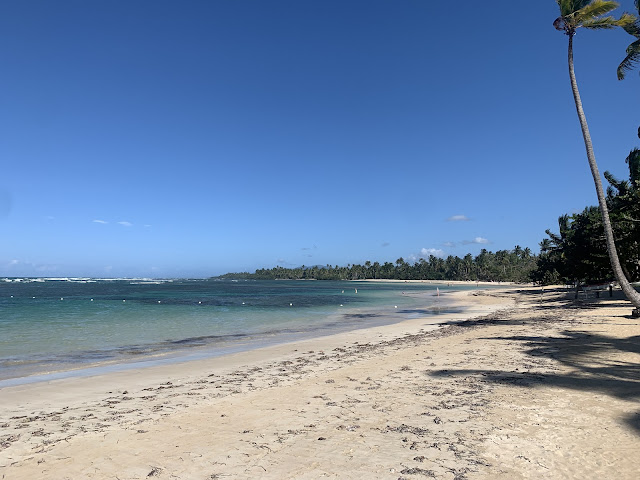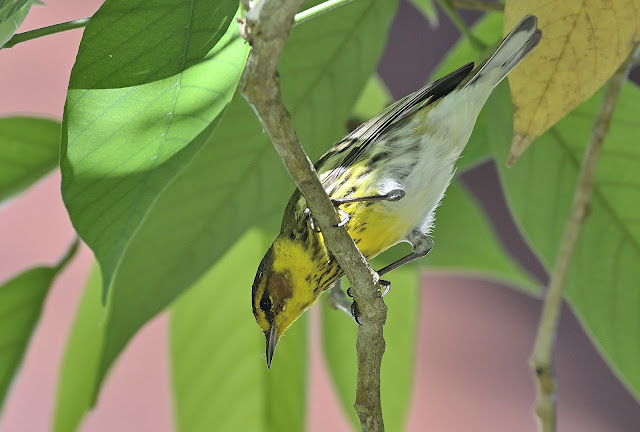Hola una vez más.
Hi again.
Hi again.
En el siguiente enlace podéis ver nuestros próximos viajes fotográficos y de observación de aves y mamíferos nacionales y al extranjero. Espero que os gusten y os animéis a venir conmigo. Una experiencia que nunca olvidareis.
In the following link you can see our next national and foreign Birds and Mammals photographic and observation trips. I hope you like them and I encourage you to come with me. An experience that you will not forget.
En esta ocasión os muestro lo que pude fotografiar en el viaje que a Republica Dominicana a principios de marzo.
This time I show you what I was able to photograph on the trip to the Dominican Republic at the beginning of March.
El tiempo fue bueno y sin lluvias.
The weather was good and without rain.
Os voy a enseñar lo que fotografíe en dos partes ya que son dos zonas muy distintas del País. Los primeros días los pasé en Casa de Campo en la Romana, que está en el sureste del país, y la segunda parte en Las Terrenas, cercana de Samaná, en el noreste de La Republica Dominicana.
I am going to show you what I photographed in two parts since they are two very different areas of the country. I spent the first days in Casa de Campo at La Romana, which is in the southeast of the Country, and the second part in Las Terrenas, near Samaná, in the northeast of the Dominican Republic.
Casa de Campo:
Casa de campo:
Casa de campo:
Da gusto escuchar el trino de los sinsontes norteños (Mimus polyglottos).
It is a pleasure to hear the trill of the Northern Mockingbirds.
Vista desde la terraza de la casa en donde estuvimos los primeros días.
View from the terrace of the house where we stayed the first days.
Un ave invernante que me gusta mucho es la candelita norteña (Setophaga ruticilla). Sobre todo los coloridos machos como el de la fotografía.
A wintering Bird that I really like is the American Redstart. Especially the colorful males like the one in the photograph.
Esta especie también canta muy bien. Se trata del zorzal patirrojo (Turdus plumbeus).
This species also sings very well. This is the Red-legged Thrush.
Una bonita reinita trepadora (Mniotilta varia).
A pretty Black-and-white Warbler.
Chucho Thrasher (Margarops fuscatus).
Pearly-eyed Thrasher.
Una de las aves que más me gustan de la República Dominicana es el barrancolí picogueso (Todus subulatus).
One of the birds I like the most in the Dominican Republic is the Broad-billed Tody.
Es una pequeña ave de tan solo 11 cm de longitud y que no llega a pesar 10 gr. Es endémica de La Española.
It is a small Bird, only 11 cm long and weighing less than 10 grams. It is endemic to Hispaniola.
Un copetón bobito (Myiarchus stolidus).
A Stolid Flycatcher.
Otra de las aves endémicas de La Española es el carpintero de La Española (Melanerpes striatus). En la foto un macho.
Another of the endemic Birds of Hispaniola is the Hispaniola Woodpecker . In the photo a male.
Otro.
Another.
Hembra. Fijaos que el píleo lo tiene negro en lugar de rojo.
Female. Notice that the crown is black instead of red.
Un cuervo dominicano (Corvus leucognaphalus) acosado por un tirano dominicano (Tyrannus dominicensis).
A White-necked Crow harassed by a Gray Kingbird.
Y en esta otra foto el cuervo dominicano (Corvus leucognaphalus).
And in this other photo the White-necked Crow.
Un sonido extraño capto mi atención cuando estaba de paseo. Resulto ser el canto de una hembra de cotorra alejandrina (Psittacula eupatria). Debía de tratarse de un ejemplar escapado pues era la primera vez que lo he visto por Casa de Campo. Es un ave que tiene su distribución en el sur de Asia.
A strange sound caught my attention when I was out for a walk. It turned out to be the song of a female Alexandrian parakeet. It must have been an escaped specimen since it was the first time I have seen it in Casa de Campo. It is a species that has its distribution in southern Asia.
Garcilla verde (Butorides virescens).
Green Heron.
Tirano dominicano (Tyrannus dominicensis).
Grey Kingbird.
Este esmerejón (Falco columbarius) cazo delante mío a una tórtola pero cuando se dio cuanta de mi presencia, decidió huir y la tórtola salió volando.
This Merlin hunted a turtledove in front of me but when it realized my presence, it decided to flee and the turtledove flew away.
Un macho de zenate antillano (Quiscalus niger).
A Greater Antillean Grackle.
Otra de las aves endémicas de La Española, la aratínga de La Española (Psittacara chloropterus).
Another of the endemic birds of Hispaniola, the Hispaniola Parakeet.
Los mangos estaban con fruto pero les faltaba bastante para madurar pero este árbol ya tenia algunos maduros y ellos lo habían encontrado fácilmente.
The mangoes had fruit but they were still a long way from ripening, but this tree already had some ripe ones and they had found them easily.
El ave nacional de la república dominicana, la cigua palmera (Dulus Dominicus). Es endémica de La Española.
The national Bird of the Dominican Republic, the Palmchat. It is endemic to Hispaniola.
Un garrapatero ani (Crotophaga ani).
A Smooth-billed Ani.
También visité la colonia de cría de las garcillas bueyeras (Bubulcus ibis). En la imagen un jóven.
I also visited the breeding colony of Cattle Egrets. In the image a Juvenile.
En ella, había también varias parejas de garceta nívea (Egretta thula).
There were also several pairs of Snowy Egret.
Otra especie endémica de La Española, el cuatro ojos coroninegro (Phaenicophilus palmarum).
Another species endemic to Hispaniola, the Black-crowned Palm-Tanager.
Había muchos plataneros (Coereba flaveola). Como son muy cantarines y territoriales son fáciles de encontrar.
There were many Bananaquit. As they are very vocal and territorial, they are easy to find.
Otra de las especies endémica de la Española e islas adyacentes es el mango antillano (Anthracothorax dominicus). En la foto un macho.
Another species endemic to Hispaniola and adjacent Islands is the Hispaniolan Mango. In the photo a male.
Como ocurre con la mayoría de los colibrís, los colores iridiscentes solo se les ve dependiendo de como les del el sol en las plumas. Por ello, he decidido poner bastantes fotos para que veías lo bonito que es este ave.
As with most hummingbirds, the iridescent colors are only seen depending on how much the sun hits their feathers. Therefore, I have decided to put enough photos so you can see how beautiful this Bird is.
En esta foto no se aprecia el colorido de las plumas de la garganta.
In this photo you cannot see the color of the throat feathers.
Hembra/inmaduro.
Feamle/inmature.
Cenaida huilota (Zenaida macroura).
Mourning Dove.
También había muchos cernícalos americanos (Falco sparverius). En la foto un macho.
There were also many American kestrels. In the photo a male.
Algunos ejemplares son realmente mansos y te permiten acércate mucho a ellos.
Some specimens are really tame and allow you to get very close to them.
Hembra.
Female.
Otro platanero (Coereba flaveola).
Another Bananaquit.
Una reinita galana (Setophaga discolor).
A Prairie Warbler.
Reinita atigrada (Setophaga tigrina).
Cape May Warbler.
Un macho de rabihorcado magnífico (Fregata magnificens).
A Magnificent Frigatebird male.
Una hembra.
A female.
El domingo 3 de marzo hicimos una excursión en yate hasta la Playa Palmilla. En la foto a la salida desde la marina de Casa de Campo.
On Sunday, March 3, we took a yacht excursion to Palmilla Beach. In the photo leaving from the Casa de Campo marina.
La playa es espectacular.
The beach is awesome.
Tenía muchas ganas de fotografiar bien a la reinita azulada (Setophaga caerulescens). En la foto un macho.
I really wanted to photograph the Black-throated Blue Warbler well. In the photo a male.
Es muy bonito.
It is very pretty.
Las terrenas, cerca de Samaná:
Las Terrenas, near Samaná:
La playa en los apartamentos que nos alojamos.
The beach in the apartments we stayed.
Cada vez hay más kitesurf.
There is more and more kitesurfing.

Las vistas desde la terraza del apartamento.
Views from the apartment terrace.
Durante estos días hice menos fotos y más paseos por la maravillosa playa. El la foto un tirano dominicano (Tyrannus dominicensis).
During these days I took fewer photos and more walks along the wonderful beach. The photo is a Gray Kingbird.
En los estanques de la urbanización había varias parejas de gallineta americana (Gallinula galeata).
In the ponds of the condominium there were several pairs of Common Gallinule.
Zenaida huilota (Zenaida macroura).
Mourning Dove.
Una zenaida aliblanca (Zenaida asiatica).
White-winged Dove.
Una bonita mariposa pavo real blanco (Anartia jatrophae).
A pretty White Peacock Butterfly.
Un macho de tordo renegrido (Molothrus bonariensis).
A Shiny Cowbird male.
Hembra.
Female.
En la playa se veían algunos charranes reales americanos (Thalasseus maximus).
Some Royal Terns were seen on the beach.
Los pájaros carpinteros de la Española (Melanerpes striatus) son muy abundantes en todos los lugares. Es un ave endémica de La Española. En la foto un macho.
Hispaniolan Woodpecker are very abundant in all places. It is a bird endemic to Hispaniola. In the photo a male.
Hembra.
Female.
Una pareja.
A pair.
Copetón bobito (Myiarchus stolidus).
Stolid Flycatcher.
Cuco lagartero de La Española (Coccyzus longirostris). Ave endémica de La Española e islas adyacentes.
Hispaniolan Lizard-Cuckoo. Endemic bird of Hispaniola and adjacent islands.
Un macho de reinita atigrada (Setophaga tigrina).
A Cape May Warbler male.
Un turpial de la Española (Icterus dominicensis).
An Hispaniolan Oriole.
Es otro de los endemismos de La Española e islas adyacentes. En esta especie no hay dimorfismo sexual.
It is another of the endemisms of Hispaniola and adjacent islands. There is no sexual dimorphism in this species.
Incluso pude ver varias cópulas.
I was even able to see them mating.
Macho de cernícalo americano (Falco tinnunculus).
Eurasian Kestrel male.
En el jardín de la urbanización se veían algunos cangrejos terrestres.
In the garden of the condo there were some Land Crabs.
Un sinsonte norteño (Mimus polyglottos) haciendo una de las cosas que mejor hace, cantar.
A Northern Mockingbird doing one of the things it does best, singing.
Garcilla verde (Butorides virescens).
Green Heron.
Estas palomas me gustan mucho. Se treta de la paloma isleña (Patagioenas squamosa).
I like these pigeons a lot. It is a Scaly-naped Pigeon.
Cigua palmera (Dulus dominicus).
Palmchat.
And to finish, a Bananaquit singing at full lung.
Si queréis suscribiros a este blog de los viajes que hacemos pincha en el siguiente enlace: Suscribirse y haz clic en ¿ Quieres suscribirte a nuestro blog?
If you want to subscribe to this post about the trips we do, click on the following link: Susbcribe and click on: Do you want to subscribe to our blog?
Espero que os haya gustado y hasta pronto.
I hope you like it and see you soon.










































































































Buen reportaje fotográfico Luis.
ResponderEliminarPreciosas aves. ¡Qué variedad de especies!!!
Muchas gracias Alejandro.
EliminarCelebro que te haya gustado.
Saludos,
Luis